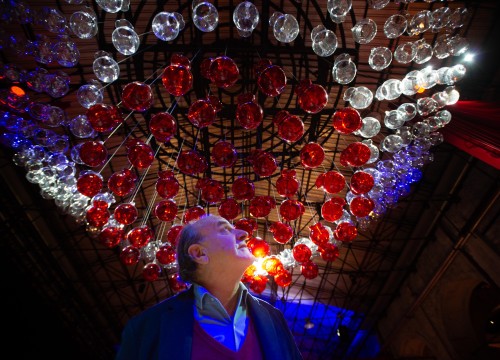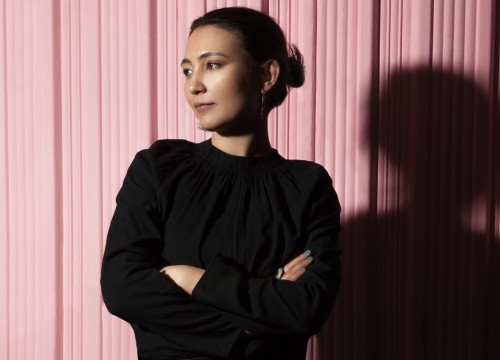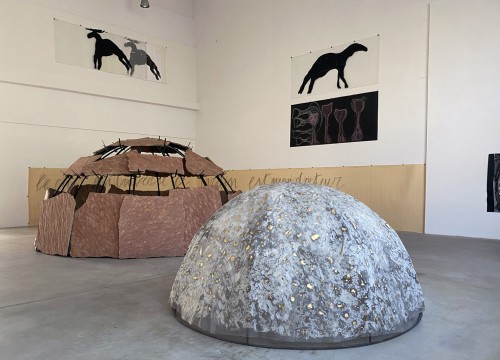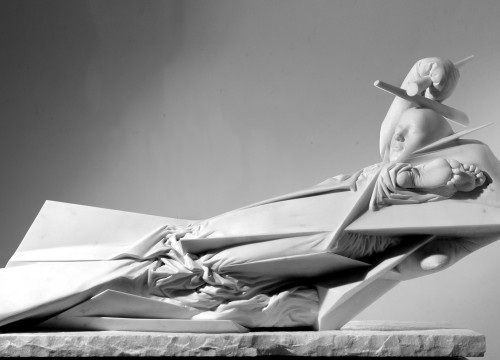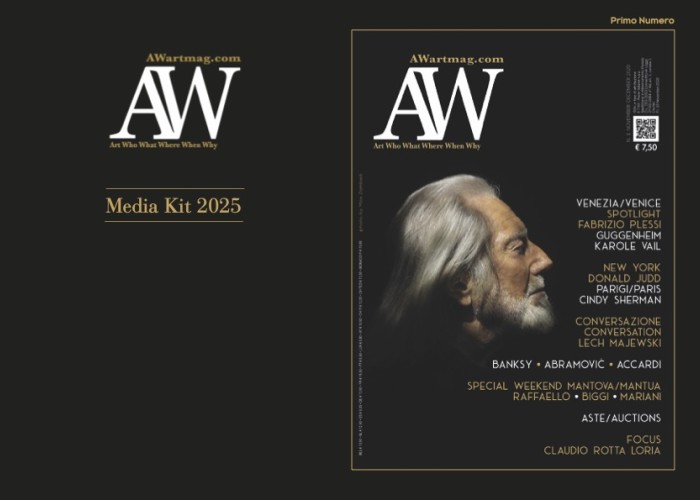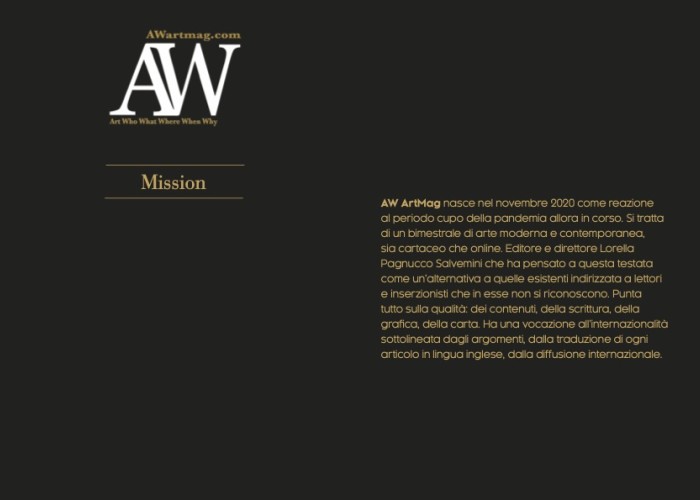The cycle Pixel-Collage combines disturbing war and violence pictures with advertising illustration
The approach to “Thomas Hirschhorn, the Purple Line”, curated by Hou Hanru and Luigia Lonardelli, is suggested by the title. The reference evokes the theory of colors, in which a precise point on the border between the spectrum of the reds and violet rejects and at the same time attracts the eye. The same destabilizing impact is recreated by the labyrinthic set-up conceived by the Swiss artist: the works are displayed on a purple wall that creates a circuitous line. At the Maxxi until the 6th of May 2022, 118 artworks that make up the Pixel-Collage cycle (2015-2017) present disturbing pictures taken from web pages dealing with war and violence, combined with advertising illustration. The short circuit lies in the choice of obscuring and pixelating just the second ones. Therefore, the exhibit focuses on the anesthetizing result of censorship at a time when, for screening the feeling of disturbance, it nurtures the phenomenon of hypersensitivity that the artist distinguishes for the inability to keep a watchful look over facts. The themes arising from the exhibit leave no room for a surface analysis of the consequences caused by the practice of hiding pain and death from the eyes. In Italy, according to the deontological code on the processing of personal data, “the journalist gives no information nor publishes pictures or images portraying subjects involved in current events which may result detrimental for the dignity of the individual, nor he/she focuses on details of violence, unless he/she determines that there is a need to point out the social relevance of the news or the image”.
THE EXHIBIT FOCUSES ON
THE ANESTHETIZING RESULT OF CENSORSHIP
Ultimately, the choice is up to the individual. In the Anglo-Saxon culture, the dissemination of trigger warnings, alerts reporting the presence of potentially shocking contents, has turned out to be counter-productive since it was found out that sometimes it increases anxiety, rather than preserving subjects with previous trauma. The empathic element, which is characteristic of the visual language, defines it as a direct tool that differs from verbalization for the ability to instantly and viscerally transmitting a content. When understanding the unique capabilities of the communication by images you make use of a comparison between figure and speech that has stimulated the reflections of the great thinkers over the years. For Foucault, “What you see can’t be entirely transposed in words” and for Proust “We feel in a way, then we name things in another”. Then, according to Hirschhorn, who expresses a contemporary complexity which is conflicting and fragmented, the pixel can be responsible for shortening the distance between beauty and cruelty. Giving priority to the coated side of reality, in fact, at the expense of a harsher one, it limits a complete and deep understanding of the truth, turning into a dangerous comfort zone that houses atrocities.










